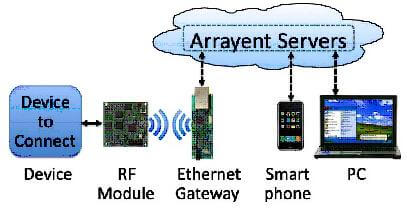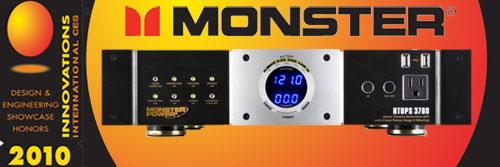Silicon Valley based Arrayent is finding ways to bring even the simplest of electronic devices onto the web. When you connect your household devices to the internet you gain a level of control and monitoring that creates some cool possibilities. Turn your sprinklers off and on with your smart phone. Track how much power your TV has used over the last month. Get a text or email alert when a smoke detector goes off at your house, even if you’re on the other side of the world. Arrayent builds the wireless boards, the internet gateways, and the online services that allow other companies to install this kind of internet connectivity into their products. They’ve already shipped more than 100,000 units and a new development kit launched on May 5th is likely to lead to many more applications being available in the near future. We don’t know if Arrayent is going to be a major player in building an internet of things, but they’re off to a pretty good start. See an application of their technology in the video below.

As we recently discussed, there are many companies looking for ways to take a wide range of consumer products and give them an online presence. This would essentially create an Internet of Things (IoT) – an interconnected web of goods that would do many of the same things people do: post Tweets, send emails, update their status. Those messages will make these products more useful by letting you interact with your products wherever you are via your computer or smart phone. The IoT is going to give physical objects a digital identity, and that digital identity will let you track, control, and optimize the real world object. Eventually, these digital identities may become so helpful that we think of them as more important than the physical object they are associated with. Is digital data really that essential? You bet. Watch this following ad from Arrayent to see how a simple device, a smoke detector, becomes easier to use and more powerful when added to the Internet of Things. Fair warning, the video is a little boring, but the idea is exciting:
So a tricked out smoke alarm is pretty cool, but it’s really the smallest drop in the bucket of what the Internet of Things could contain. Arrayent knows this, and rather than dreaming up all the possible ideas for themselves, they are allowing others to develop their own applications. The Arrayent development kit (now available for $1900) gives companies a chance to play with their wireless boards, ethernet gateways, and internet services and find the best way to integrate them into products. Essentially Arrayent is providing an easy way of putting a lot of commercial goods on the IoT.

Part of what I find promising about the Arrayent components is that they are really cheap. They typically cost just $5-7 to build. The internet services Arrayent provides are included in this setup and consumers won’t have to pay a monthly fee to use these objects. Conceivably that means you could incorporate IoT capability into almost anything electronic without raising its price very much. Consumers are likely to adopt new IoT enabled products if their expense is competitive. I mean, wouldn’t you pay $10 more to get a DVR you could remotely control via your smart phone? Well, I think some people already have that:
As the commercial demonstrates, some of the applications of the IoT are already here. Arrayent is just trying to let companies produce more. They’ll provide the hardware to get your electronic device on the net. Once there, Arrayent also runs a cloud-based server to manage the internet traffic that arises when your objects start talking. The Arrayent internet service isn’t really the same as the web humans surf. Your household objects won’t be Google searching on Chrome. Instead the data is handled by the Arrayent software and directly sent where it needs to go. That doesn’t mean that Arrayent’s IoT enabled products can’t do very web-like things: they helped build a Mattel device that lets tweens instant message each other while not be exposed to strangers on the world wide web.

Arrayent’s wireless board, ethernet gateway, and cloud-based server provide all the necessary components to put a product on the Internet of Things. That makes it very enticing for all kinds of electronics manufacturers to purchase a development kit and create the next generation of web-enabled goods. We should remember, however, that Arrayent has a lot of competition. ioBridge sells IoT enabling hardware, and the list of companies looking to handle the data flow from objects is growing every day (Pachube, IBM, WideTag, SenseNetworks, etc). As we said before, it’s much too early for us to predict which, if any, of these companies will be a driving force behind developing the IoT. What is becoming clear, however, is that businesses are starting to see the advantages of taking their goods online, and consumers will have many more of these products to choose from in the near future. The Internet of Things is being built one small piece at a time, but it is growing.
[image credits: Arrayent]
[source: Arrayent Press Release]


